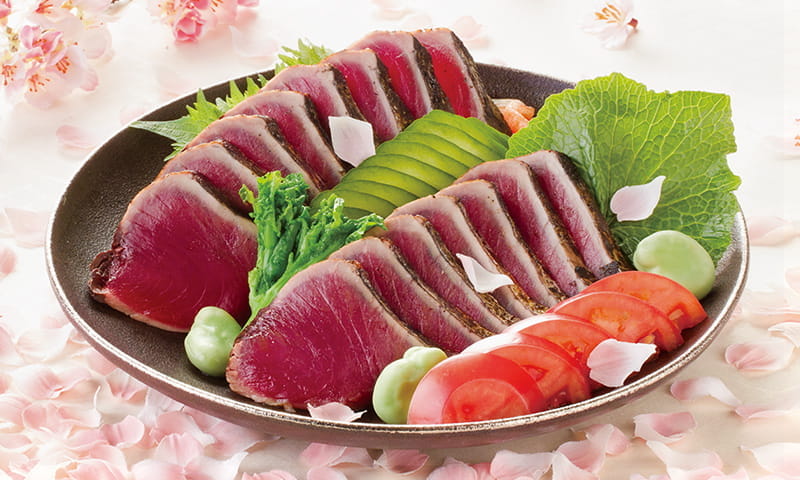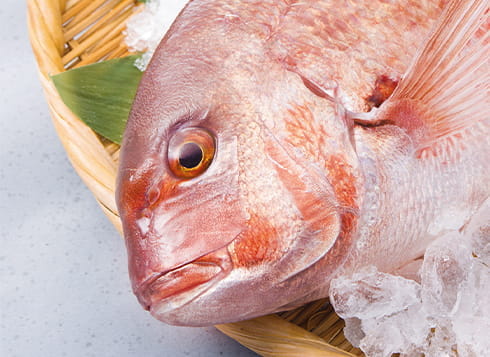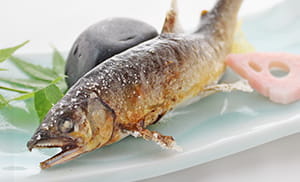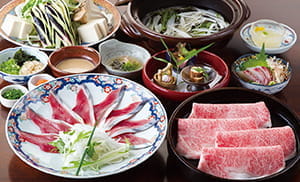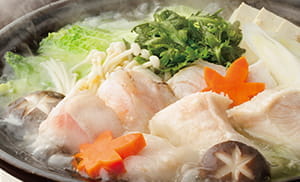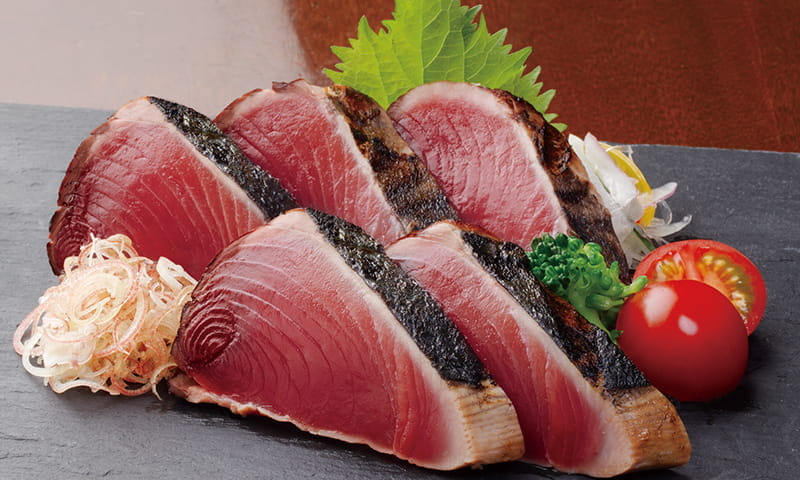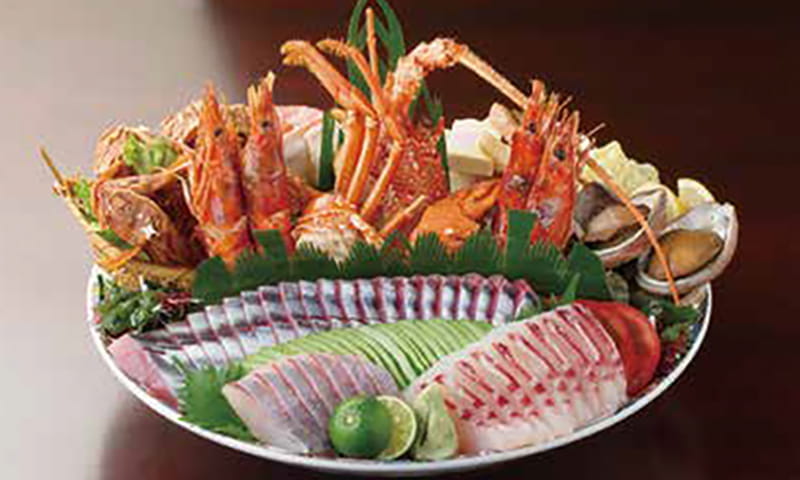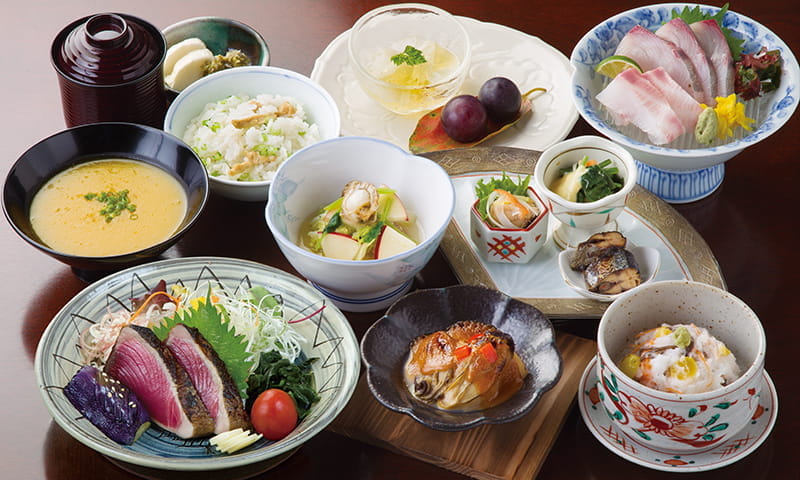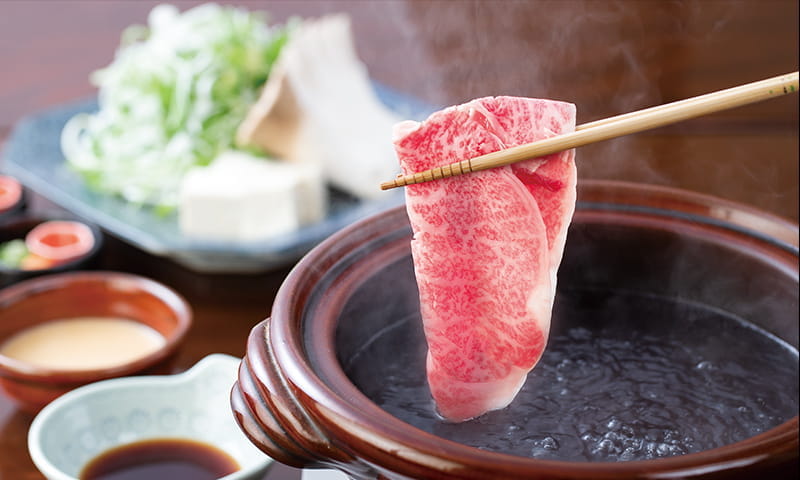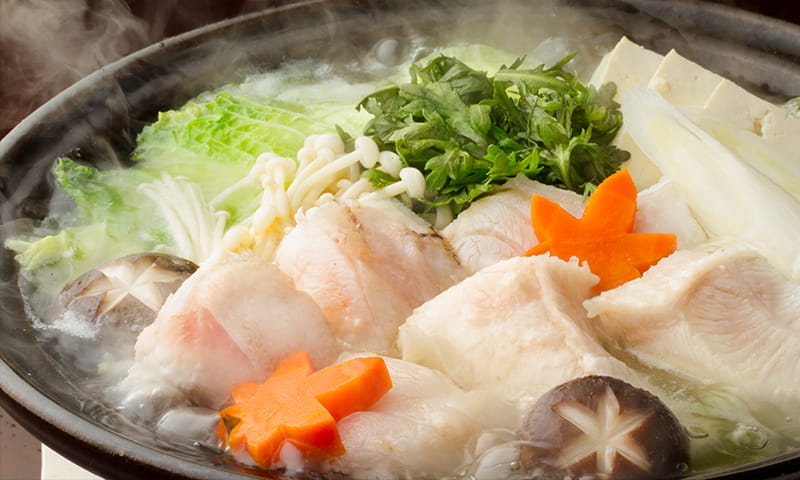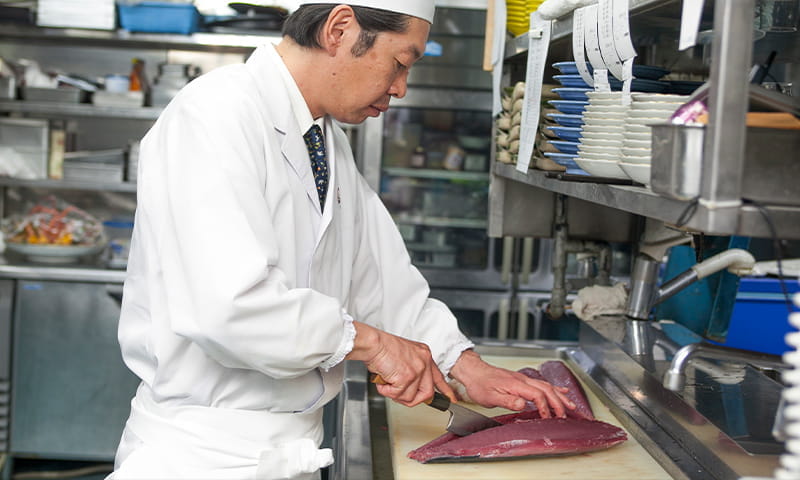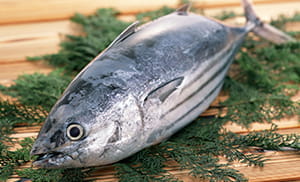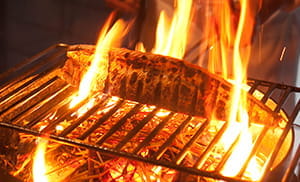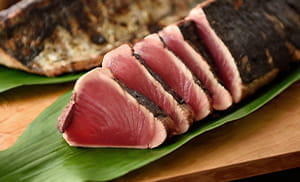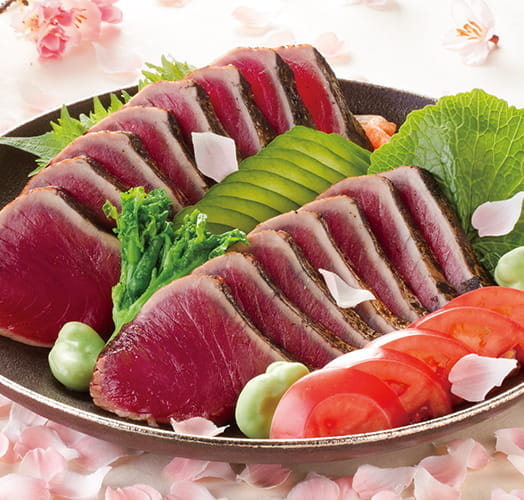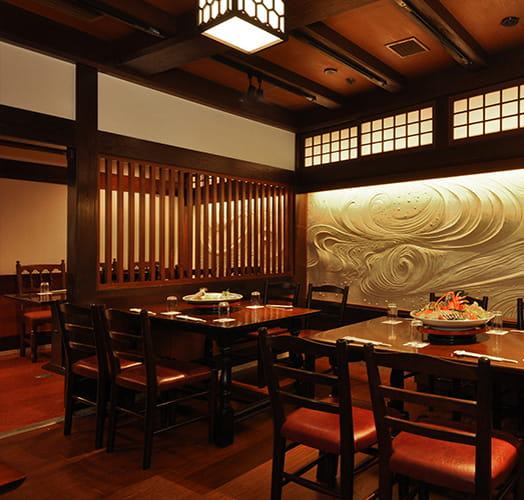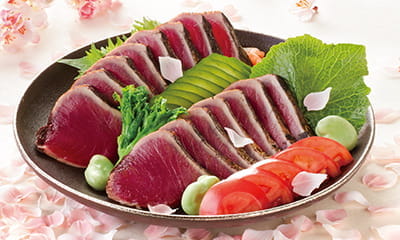
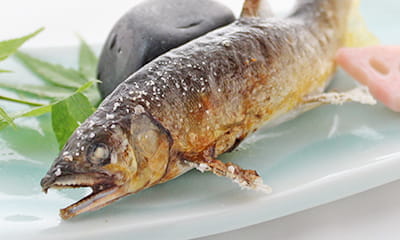
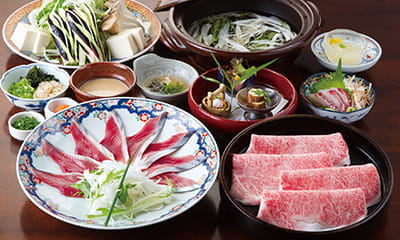
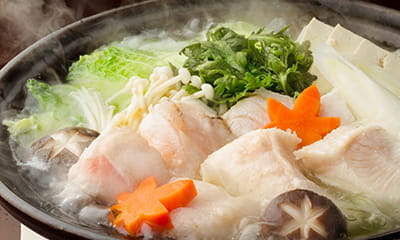
Our Dishes
“Neboke” Traditional
Japanese Cuisine
Restaurant
We are a Japanese restaurant that celebrated our 100th year anniversary in 2017. We coined the name “Tosa cuisine” due to the distinguished food culture of Kochi Prefecture located in the island of Shikoku. We have been spreading this culture throughout Japan over the years. We are proud to be the pioneer of “Tosa cuisine”.
Kochi region has been called “Tosa” since the Edo era (1603 – 1868). “Tosa cuisine” is a variation of Japanese cuisine prepared with quality fish, meats, vegetables, and fruits from this region surrounded by ocean, mountains and rivers.
Delicateness of Japanese cuisine combined with heartiness of Kochi spirit, this unique harmony is found only here at Neboke. Please enjoy the goodness of Tosa cuisine to your heart’s content.
-
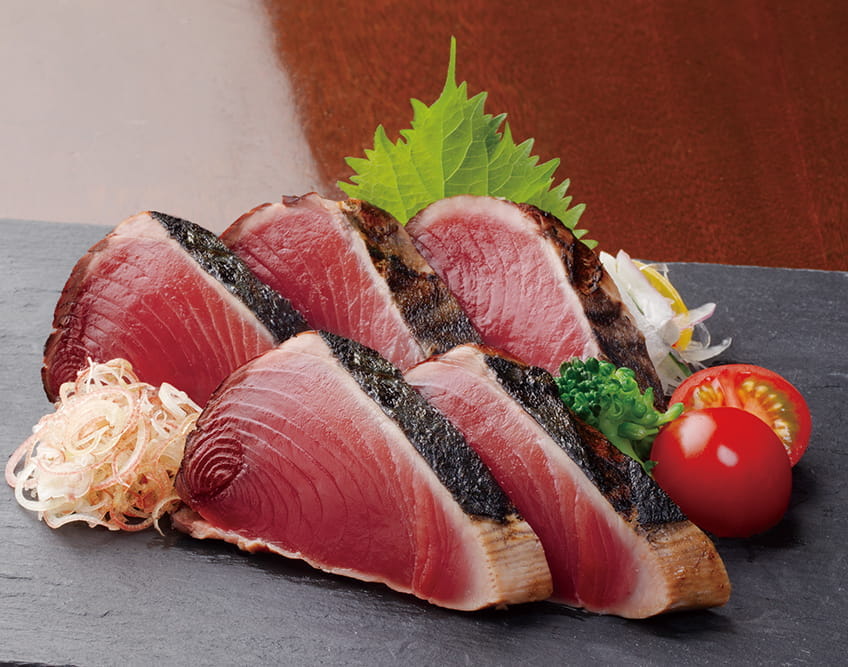
1.“Charcoal Flamed Skipjack-Tuna” -
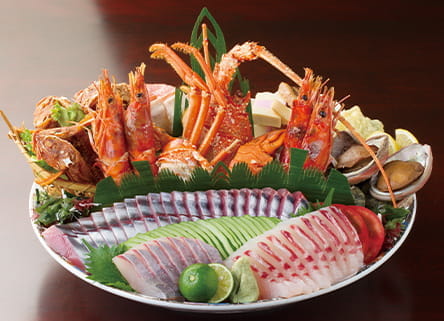
2.Dynamic Sashimi Platter “Sawachi” -
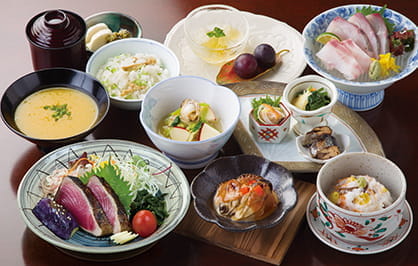
3.Japanese Full Course Meal “Kaiseki” -
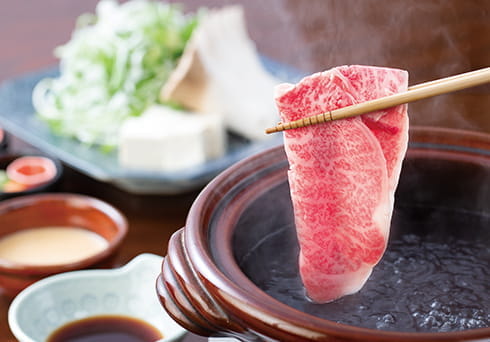
4.Japanese Beef Shabu Shabu -
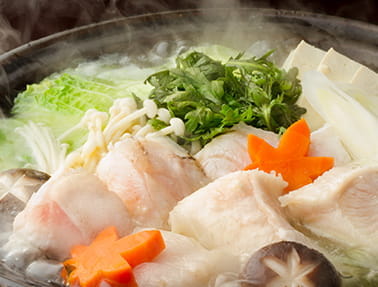
5.Kue Hot Pot (Served only in Winter)
Our Speciality
1.“Charcoal Flamed Skipjack-Tuna”
Kochi is synonymous with “katsuo tataki” (Katsuo – skipjack-tuna, tataki – flamed and sliced sashimi). Our “katsuo tataki” is a special delicacy that boasts fans throughout Japan. We eat it by dipping the slice in our house ponzu (yuzu citrus vinegar soy sauce). Combination of melting texture and smoky charcoal roast flavor has captivated Japanese taste buds. We are sure that you too will become a fan.
2.Dynamic Sashimi Platter “Sawachi”
Experience traditional Kochi region hospitality with a variety of dishes presented dynamically on a platter. These festive platters will brighten up your table. Highly recommended for parties of 2 or more.
3.Japanese Full Course Meal “Kaiseki”
“Kaiseki Cuisine” is a Japanese Full-Course Meal. We serve you one dish at a time. You can experience a variety of Tosa dishes.
4.Japanese Beef Shabu Shabu
“Shabu Shabu” is a hot pot that you cook and eat yourself. As the beef is dipped in the stock, the excess fat is taken away, and the rich flavor is brought out. The beef is tender and melts in your mouth.
5.Kue Hot Pot (Served only in Winter)
Treat yourself with Kue and seasonal vegetable hot pot. Kue, the longtooth grouper, is sought out as rare fish praised to be better than Fugu, the blow fish. The fish condenses as it cooks in the hotpot. The result is a perfect taste combination of high quality fat and stock. We call Kue the mythical fish because it’s so rare that even the most experienced Kue fisherman catches only a few Kue a month. At our restaurant, we are adamant in serving only wild, not cultivated, fresh, mature Kue from a selected sea.
“Katsuo Tataki”
Bonito fish, prepared
like a rare steak
Kochi is known for its Katuo (Bonito) fishing. The warm Kuroshio Current flows up the Pacific Ocean past Kochi Prefecture, making fishing a major industry there. Its bonito consumption is reported to be the highest in Japan. One way to prepare bonito is Katsuo Tataki ("pounded bonito").
In Japanese cuisine, tataki generally means pounding raw fish with a knife to mince it, then mixing in a condiment like shiso (Japanese basil). But Katsuo Tataki is prepared in an entirely different way. First, the fish is cleaned and filleted. Then the skin sides are broiled over charcoal flame until they are evenly scorched. Next, coarse salt is sprinkled on the fillets, which are then given light taps with a hand. The dish gets its name “Tataki” because the seasoning is tapped (tataki) lightly into the Katsuo fish. Katsuo are eaten with thin slices of garlic and yuzu citrus vinegar soy sauce.
There are a number of theories about how this preparation method began. One is that in the early 17th century Yamauchi Kazutoyo, the lord of the Tosa domain (present-day Kochi Prefecture), prohibited eating sashimi or raw fish to prevent food poisoning, but the common folks would scorch just the exterior and pretend it was broiled right through. Another explanation is that the dish began in the early days of Japan's modernization (after 1868), to give Westerners a taste of something close to grilled steak.
We use bonito caught in a traditional way, with a pole and line to protect the fish from injury. This enables the restaurant to offer fresh, firm fillets. In spring, they swim north with the warm current, bearing little fat and providing a lighter taste, while in fall, they ride the cold current south, fatter and ready to provide a heartier flavor. We serve seasonal dishes with a different Katsuo Tataki taste.
The head chef at the restaurant says, "In Kochi it's common to eat it while the skin's still warm. Be sure to use coarse salt—that gives it a more intense flavor." When prepared this way, the skin is crisp, savory and warm, while the flesh will be cool with a pliant texture like a rare steak.




